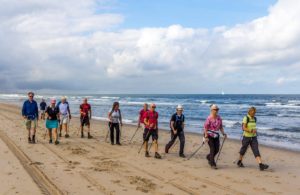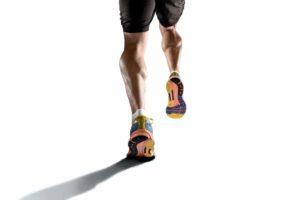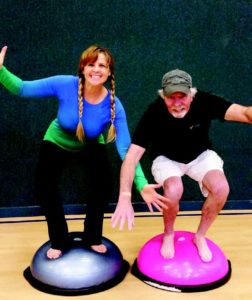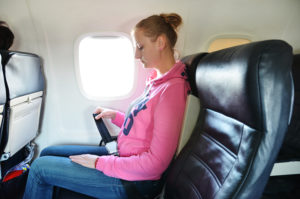Corrective Exercise
Programming to Prevent ACL Injury
Your new client, 16-year-old Alexis, is a competitive athlete who wants you to design a fitness program that will help her prevent a second anterior cruciate ligament (ACL) tear. She partially tore her ACL while playing soccer and rehabbed it with a physical therapist, who cleared her to play again. Alexis returned to spring softball without an issue, but she would like to be as fully prepared as possible for the upcoming fall soccer season. She hopes to be recruited to play in college, but her parents are concerned she will sustain another ACL injury, perhaps a more severe one.
Pillars of Functional Training for Active Aging
Healthy aging is more than the absence of disease, according to the World Health Organization (WHO): “For most older people, the maintenance of functional ability has the highest importance” (WHO 2015). Colin Milner, founder and CEO of the International Council on Active Aging in Vancouver, British Columbia, echoes these comments. “When looking at the healthy aging market today, the focus is all about function,” he says.
The Achilles Tendon
Many fitness professionals have dealt with an Achilles tendon injury, either their own or a client’s. The largest and strongest tendon in the body, the Achilles connects the lower-leg muscles and calf to the heel. “Synchronous functioning” of the tendon and calf is crucial for many activities, including standing on tiptoe, running, jumping and climbing stairs (Bhimji 2016).
Dutch surgeon Philip Verheyen named the tendon (after the Greek hero Achilles) in 1693. Previously, it was known as “tendo magnus of Hippocrates” (van Dijk 2011).
The Anatomy of Functional Training Risks
Many clients can’t seem to get enough of workouts that meld functional movements with high-intensity resistance training. Indeed, workouts using dynamic, high-intensity, full-body movements are great for strength and health—provided the body functions properly and exercisers use correct technique.
Getting Better at Recovery
A growing body of research is shedding more light on the importance of resting after exercise—providing vital clues on measuring and enhancing the recovery process. These insights are welcome news to personal trainers and coaches who see the consequences of overtraining and inadequate recovery every day. This column discusses some of the latest research on assessing and managing recovery and advises on tactics that may help your clients recover from exercise.
The Functional Movement Screen and Active Older Clients
Study reviewed: Mitchell, U.H., et al. 2016. Performance on the Functional Movement Screen in older active adults. Journal of Sport and Health Science, 5 (1), 119–25.
Why Proper Rib-Cage Position Is Important
Proper thoracic-cage functioning sets the groundwork for healthy movement.
Give Yourself a Hand
The next time you pick up a dumbbell and hand it to your client, take a moment to celebrate the hard‐working hand. The hand is an anatomically refined dynamo that's often taken for granted until something as benign as a paper cut shifts the focus distally. Here are some interesting facts to grasp:
The “New” Knee Ligament, Rediscovered
Hasn't the knee been thoroughly mapped? Perhaps. However, the following bold headline reverberated throughout the allied health community in 2013: "Doctors Identify a New Knee Ligament."
Really?
Preventing Golf Injuries
As a golfer, you want to stay injury-free to practice and compete regularly, which ultimately lets you hone your skills and elevate your performance.
To help avoid injury and boost level of play, you need to understand how two key muscle and soft-tissue systems—the posterior oblique system and the anterior oblique system—affect the golf swing.
The Big Payoff to Better Posture
When I was a kid, my dad was a stickler for posture. "Sit up straight," he'd say as I slouched over a plate of pasta. Other times, he'd try a tactile approach. I'd be standing in line at the market or sitting in the bleachers watching my oldest brother play baseball, and out of nowhere I'd feel two thumbs dig gently into my upper trapezius muscles while the remaining fingers of each hand gripped my shoulders and pulled them back. All these years later, I'm the one cuing people to mind their posture.
Why Older Exercisers Should Try Nordic Walking
Nordic pole walking is a highly enjoyable, easy–to–learn way for exercisers of all ages to get outdoors and get moving. If you're unfamiliar with Nordic pole walking, this primer will provide key reasons why it can be such a good fit for your older–adult clients, in particular.
A Minor Issue?
When you work with enough clients, eventually you notice all the variations in biomechanics and anatomy. You may or may not remember from your fitness professional certification studies that only about half of people have a psoas minor muscle. When it's there, it lies in front of the psoas major and originates from the sides of the 12th thoracic vertebra (T12), the first lumbar vertebra (L1) and the corresponding intervertebral disk (Farias et al. 2012).
Thriving After a Stroke
client: Gary | personal trainer: Tracy Markley, owner, Tracy's Personal Training | location: Florence, Oregon
Surviving a stroke. In May 2014, 65–yearold Gary had a stroke so severe his doctors were skeptical he'd survive it. Fortunately they were wrong, but he suffered so much damage that physical therapists were initially convinced he'd be wheelchair–bound for life.
The 4 Most Common Running Injuries and How to Address Them
Use corrective exercise to help clients stay on track with their mileage goals.
What Is Plica Syndrome?
Clients sometimes experience general pain in the knee during or after an exercise session, and while it's not within your scope of practice to diagnose, a broad understanding of issues that affect this important joint can be helpful. Here's a snapshot of plica syndrome.
Plica is a fold of synovial tissue that's a "remnant" of embryologic development. The knee is initially divided into three compartments by membranes, which are then resorbed by the third or fourth month of fetal life (Scuderi et al. 1997).
Corrective Exercise for Foot, Ankle, Knee and Back Pain – Calf Stretch on BOSU
Activities such as walking, squatting or lunging require coordinated movement. The ankles must be able to bend to allow the legs to come forward over the feet, and the knees to bend when squatting or lunging. Restricted motion in an ankle can cause pain and dysfunction to any number of bodily structures as they compensate.
Aerobic Fitness May Preserve Brain’s Youthfulness
Physical fitness may do more than preserve a more youthful body; it may also impact the brain’s activity and function, preserving more youthful mental capabilities, according to findings published in NeuroImage (2015; doi: 10.1016/j.neuroimage.2015.09.062).
University of Tsukuba researchers in Japan found that fitter older men performed better mentally than less fit older men, by solving problems in the same way younger brains would do.
10 Steps to Ease Tension on Any Seat, Chair or Bench
Why is it hard to stay on track while traveling? Start with the distractions. If it’s not a smartphone diverting your attention, it’s a book or laptop, fast food or your travel companion. Distractions are not bad, mind you. They’re simply inevitable.
That’s why it’s so important to shift your priorities. Instead of checking social media and email the next time you sit down on a plane or train, how about tuning in to posture and body awareness?
Chronic Pain in Fitness Professionals
An Objective Eye
It can be difficult to take a step back and be objective when it comes to your own health. Katy Bowman, MS, director of the Restorative Exercise Institute in Ventura, California, and author
of Move Your DNA: Restore Your Health Through Natural Movement (Propriometrics Press 2014), suggests you write down
the following:
- « Previous
- 1
- 2
- 3
- 4
- Next »

















